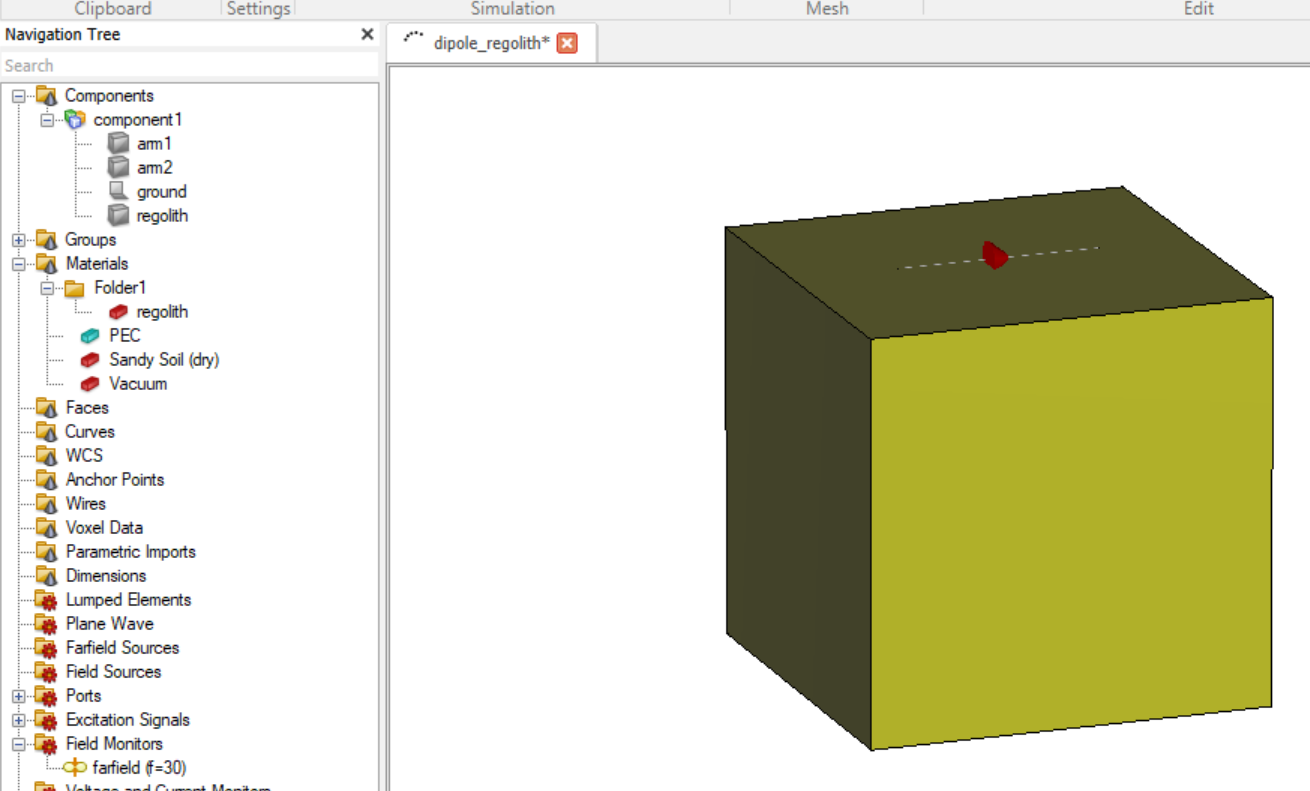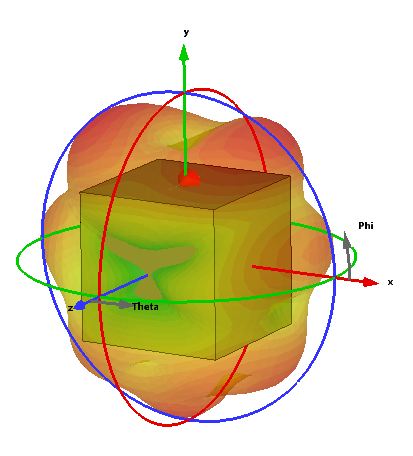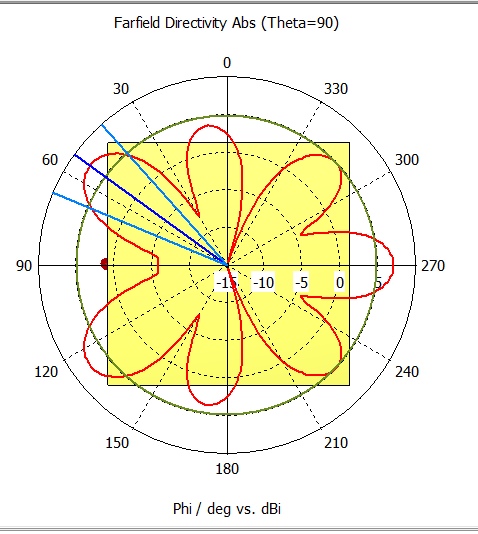Arguments in favor
- SOURCE FARSIDE: Since the antenna is so close to the regolith, in terms of wavelength, the use of a ground screen (as used at higher frequencies in observatories such as OVRO-LWA and LOFAR) is impractical. As a consequence, the majority of the antenna beam is pointed into the regolith. The electrical performance of a wire antenna near, on, or below, a dielectric surface has been studied in detail by Rutledge and Muha [1982] and is fully accounted for in the NEC4.2 simulations. The main differences with a free-space dipole is that it radiates more power into the dielectric than the air (or space) by εr3/2, a power ratio of about 5 (7 dB) for typical regolith εr = 3.
- SOURCE Low Radio Frequency Observations from the Moon: On the lunar farside, the lunar highlands are thick, have low conductivity, and vary slowly with depth, thus removing the need for a ground plane. The net impact of this multipath effect is to introduce a direction dependent component to the array synthesized beam.
- Lunar Surface Propagation Modeling and Effects on Communications: The lunar ground acts as a partial reflector and partial absorber to the RF signals.
- Estimation of lunar surface dielectric constant using MiniRF SAR data: The dielectric constant of the moon surface is around 3. Hagfor’s observations show a dielectric constant of 2.7 for the less dense upper regolith
Arguments against
- Simulation of Ultra-Long Wavelength interferometer in the Earth orbit and on the lunar surface: [SOME BROKEN REFERENCES] - The relative permittivity of the lunar regolith is approximately 6 (Woan 1996). For a dipole lying on the lunar surface, the response to the signal transmitted from below the lunar surface will be 4.5 times that for a signal from above (Woan 1996). The regolith will affect the coherence of signals and therefore the imaging quality in complex ways. In the following, we quantitatively show the effect with a simplified model to explain how the lunar regolith affects such observations.
- Moon regolith is 8 meters. Multipath effects is a major error in interferometry.
Some question
- Effect of the regolith in multipath
- Effects of the regolith in the farfield effect. The multipath effect with change the farfield effect causing in different radiation diagrams in the antennas.
After a chat with the teacher the conclusion is:
- This is a new mission so it is not that easy to take what was it done.
- The multipath effect in interferometer is super important
- I have to sit down and make the calculations to get how bad is the problem, if it is worth to put a ground plane.
- The argument of the signal is stronger when you point with your antenna to the ground comes from the moonquakes.
Conclusion
After a simulation in CST, this is the effect of the regolith in the moon:




The presence of the moon regolith affect greatly to the radiation pattern, that is why you have more directivity in the direction of the moon. The regolith makes the behaviour of the antenna impredictable.